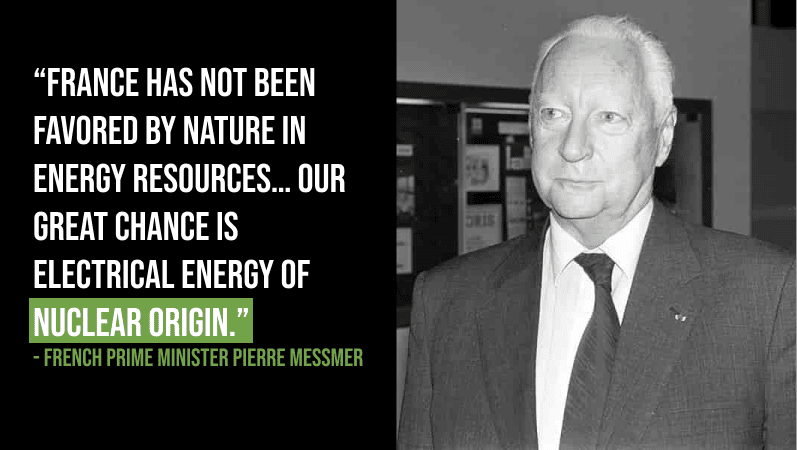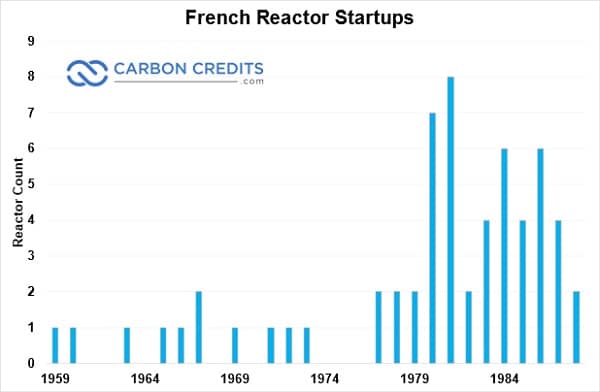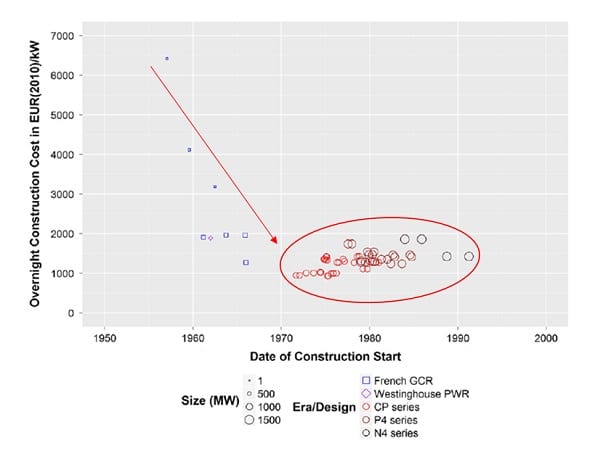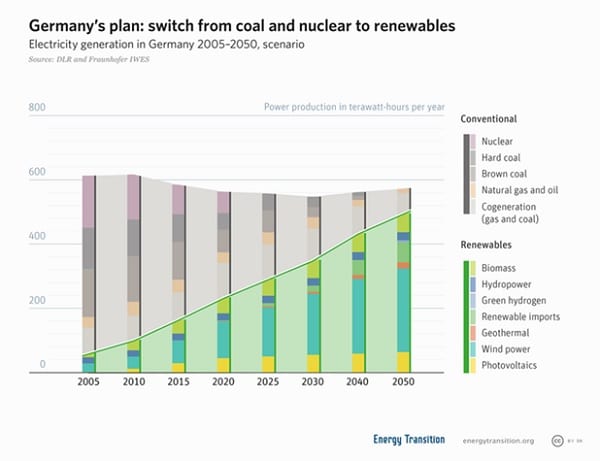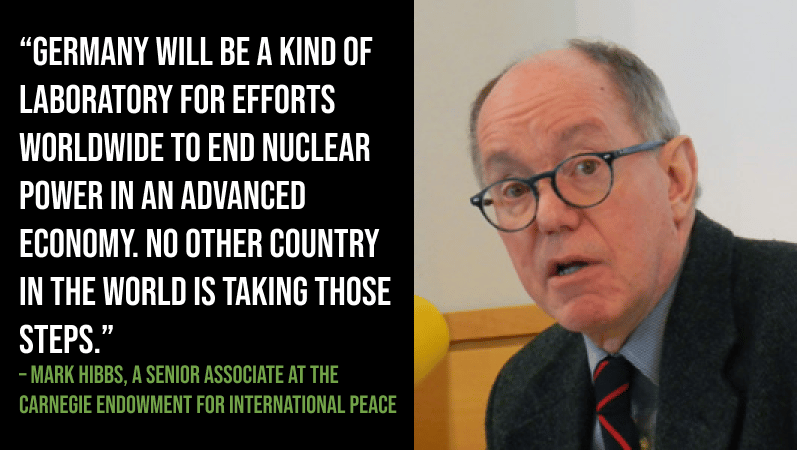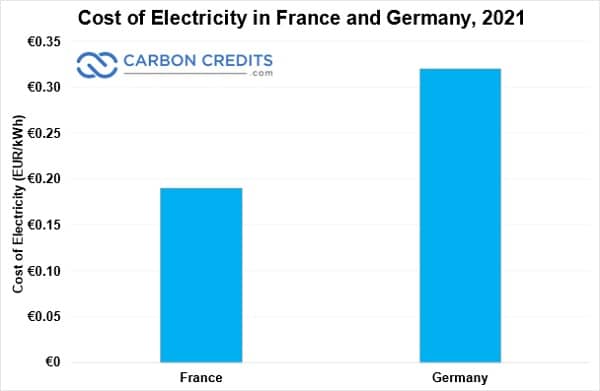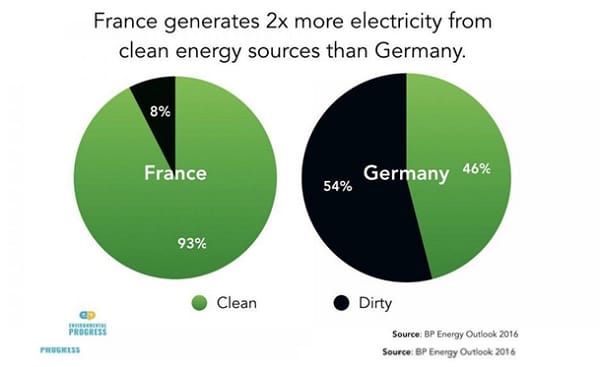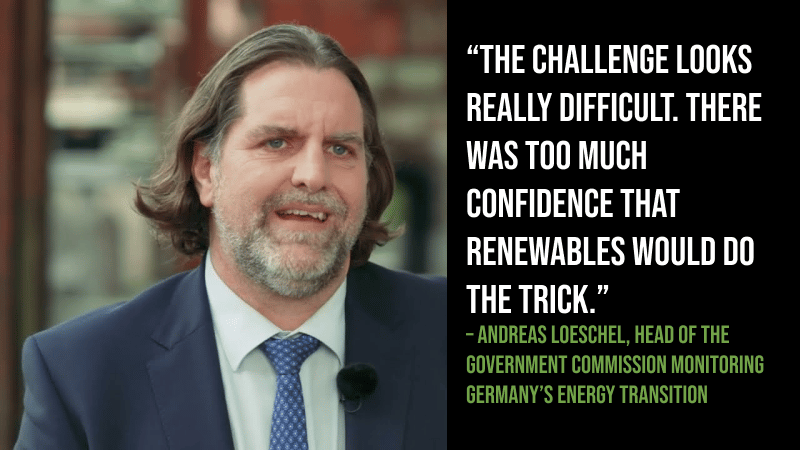France was heavily dependent on fossil fuels for electricity—but had no reserves of its own. So when OPEC pushed up the price of oil by 400 percent, it threatened to destroy the country.
With little domestic coal or gas, France had zero energy security.
But it did have something else: substantial heavy engineering expertise.
So in 1974, French Prime Minister Pierre Messmer made a speech on national TV, declaring a new direction for French energy:
 He called for France to go “all nuclear, all electric.”
He called for France to go “all nuclear, all electric.”
Construction of the first three nuclear plants under the “Messmer Plan” started in December 1974. They were completed six years later.
- And in just fifteen years, France went from breaking ground to producing electricity at forty-eight nuclear reactors.
France built reactors that quickly by making two smart decisions:
- The forty-eight reactors were made from just five designs.
- They were built at only twelve plants.
That meant standardized processes and greater efficiencies, keeping the price of construction low.
Then France ran into a snag. Messmer’s original plan called for constructing 170 plants by 2000.
- But by 1990, less than fifty nuclear reactors were providing more than 75 percent of France’s energy needs.
France simply had too much power from nuclear, and its nuclear units had to operate at a capacity of only 61 percent.
EDF, the French electricity company, began trying to stimulate electricity demand to soak up spare capacity.
To this day, nuclear power generation in France remains so high that nuclear plants occasionally close for the weekends.
It’s an unbeatable level of energy security.
Not only that, but it accidentally gave France an incredible head-start in the race to net zero.
Because the year Messmer gave his speech, per-capita emissions in France peaked—and they have fallen by 60 percent since then.
France is beating climate change without even trying.
Meanwhile, in Germany…
In 2009, Germany unveiled a plan of its own: the International Climate Initiative. It laid out how the country would switch entirely to renewable energy by 2050.
As with everything German, they came up with a new word for the conversion: “Energiewende.”
The goals for Energiewende were ambitious, including emissions reductions of 80–95 percent and a renewable energy target of 60 percent by 2050.
Energiewende was passed into law in 2010. Germany was celebrated as “The World’s First Major Renewable Energy Economy,” and Germans were proud.
“It’s a gift to the world!” a German analyst bragged to the New York Times.
Curiously, the first source of energy to be eliminated was nuclear—which has zero emissions.
In other words, Energiewende was a perfect counterpoint to the Messmer Plan. It would demonstrate whether energy security and a carbon-free economy could be achieved through renewables alone.
A year later, Fukushima happened. Frightened by the incident, the German government decided to permanently close all nuclear reactors by 2022.
“It’s definite. The latest end for the last three nuclear power plants is 2022. There will be no clause for revision.”
– German Environment Minister Norbert Röttgen
The decision, spearheaded by former German Environment Minister and former nuclear proponent Angela Merkel, was not without its detractors.
In 2011, the New York Times reported predictions that eliminating nuclear could:
- force Germany to import nuclear power from France, or even
- inflate the cost of energy across the continent.
If only they knew…
How It Started Versus How It’s Going
Germany’s renewables costs—for solar panels and wind turbines and biogas plants—were rapidly forced onto consumers.
A study by the OECD found that the cost of household electricity in Germany increased by 50 percent from 2006–2017. And the report came to a surprising conclusion:
- Electricity prices will continue to increase as long as Germany keeps building solar and wind.
Meanwhile, France’s electricity costs are 40 percent lower than Germany’s.
But that’s just because clean energy is more expensive, right?
Wrong. France also produces twice as much of its electricity from clean energy sources as Germany…
… while producing one-fifth the carbon emissions from electricity per capita.
In fact—thanks to Energiewende—German carbon emissions are rising.
-
Germany saw its largest rise in CO2 emissions in thirty years last year.
Why? Because as German nuclear was phased out, it was primarily replaced by two electricity sources: coal and imported gas.
In fact, closed coal plants are being restarted to compensate for shuttered nuclear. And Germany is scheduled to open a half-dozen new fossil fuel facilities by the end of 2023.
That’s right.
The nation that Bloomberg says “did more than any other to unleash the modern renewable-energy industry” is actively building CO2 factories.
Meanwhile, the deployment of renewables is falling off a cliff. Wind turbine installation dropped by nearly 60 percent from 2017–2018.
- In 2021, Germany barely installed more wind than in 2000.
It was an echo of solar: Installations of solar panels fell by 85 percent from 2010–2014, and have still not recovered.
But it’s too late: the money has been spent.
Three years ago, Germany’s Federal Court of Auditors found that Energiewende had cost $160 billion over the last five years—an expense that was “in extreme disproportion to results.”
“The Energiewende — the biggest political project since reunification — threatens to fail.” – Der Spiegel
Back to the Nuclear
By 2025, Germany will have spent $580 billion on renewables and related infrastructure.
Yet CO2 emissions in Germany have dropped by less than two percent a year since 2010. They need to drop by six percent every year now to reach the country’s 2030 goals.
So Germany is already setting aside $300 million a year to pay EU emissions fines. At the same time…
France is making $3 billion a year from selling nuclear electricity to other countries.
And it’s ready to double down on nuclear. At COP26, French president Emmanuel Macron made it clear: France would “relaunch the construction of nuclear reactors” to “guarantee our country’s electricity supply.”
In February 2022, Macron announced that France was planning to build six more nuclear reactors… and considering building eight more after that.
It will also extend the life of existing reactors deemed safe and suitable past fifty years.
French electricity company EDF called it the “fastest and most certain path to achieve carbon neutrality.”
Germany has no choice but to follow suit.
In October 2022, it announced that its three remaining nuclear plants would extend operations until April 2023.
Economy and Energy Minister Robert Habeck said it was a “necessary” step to avoid power grid shortages.
Some lawmakers in Germany are going further—suggesting that decommissioned plants be reopened and new reactors built.
Because reducing carbon emissions is good. But since the Messner Plan, this has always been about one thing: energy security.
And in its quest to gain independence from nuclear, Germany found itself with a new dependency—on Russia.
The “partnership” with Russia was supposed to provide a “mutual dependency intelligently for the future.” It has not looked intelligent thus far.
The results of the trillion-dollar, half-century energy experiment are in: Nuclear won.
And now every country that wants to remain energy independent and go low-carbon is turning toward the only viable solution on the planet: nuclear.

